The plastic pallet manufacturing process has evolved overtime with every company striving to incorporate the best technology. That is, one that optimizes wall thickness, enhances the rib structure, produces sophisticated designs, reduces overall weight, increases durability, etc.
At times, it may prove difficult to choose the right plastic pallet manufacturing technique, especially if you’re a newbie in this industry.
In this article, you will learn about the various pallet manufacturing processes and how to choose a technique that will increase supply chain efficiency. I will focus on the following key manufacturing processes:
- Injection molding plastic pallets
- Thermoforming plastic pallets
- Blow molding plastic pallets
- Compression molding plastic pallets
- Rotational molding plastic pallets
Generally, these are the most common manufacturing processes in plastic molding industry. In the next sections, I will not only discuss each of these processes, but also include videos and images where necessary.
1. Injection Molding Plastic Pallet
Injection molding is one of the most popular processes of shaping plastics to a desired pallet shape and size. It is suitable for large scale production, especially where the same design of plastic pallet should be molded several times.
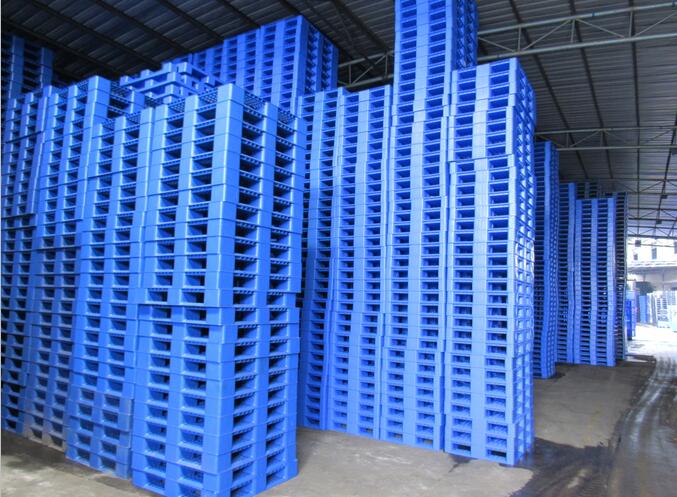
Injection molded plastic pallets in a warehouse
Generally, injection molding process involves the following key processes:
- Raw material is fed into the machines through a hopper (depending on the type of plastic pallet, you can use PP or HDPE material).
- Heater bands and frictional force melts the plastic material
- Hot plastic (in liquid state) leaves the heating chamber through a nozzle to a cavity (shape of the pallet you need), where it cools and hardens.
Remember, the sequence and heating process may vary depending on the design of the injection molding machine. You can watch this plastic pallet injection molding video to get a clear picture of what I am talking about:
In injection molding plastic pallet manufacturing process, you can choose from:
- Low pressure structural foam molding
- High pressure injection molding
So, what’s the difference between these two types of injection molding?
Low Pressure Structural Foam Molding
Here, the molding cavity is injected with plastic pallet material and an inert gas. That is, a gas that does not react chemically with the material.
You can use either carbon dioxide or nitrogen.
Heating a mixture of nitrogen gas and polypropylene activates blowing agents. This produces a cellular core surrounded with a rigid plastic material.
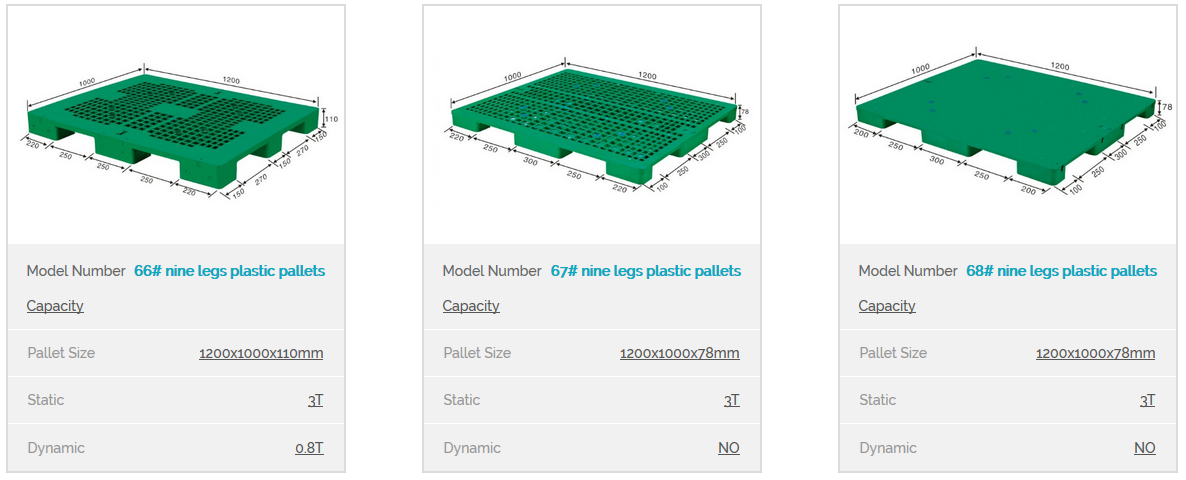
Different sizes of plastic pallets
This plastic pallet manufacturing process is popular due to the following key reasons:
- Plastic pallets have a higher strength to weight ratio
- It requires less material to make pallets
- Less expensive compared to high pressure injection molding
- Allows for flexibility in both rib and shape design
- Plastic pallets are stiff, rugged and durable
In short, it is important to evaluate the circumstances under which you want to manufacture plastic pallets. If it fits the above criteria, then low pressure structural foam molding is an ideal option.
High Pressure Injection Molding
High pressure injection molding is a popular process in manufacturing high-density polyethylene (HDPE) plastics. It is a precise process that produces plastic pallets that do not require further processing and high gloss finish.
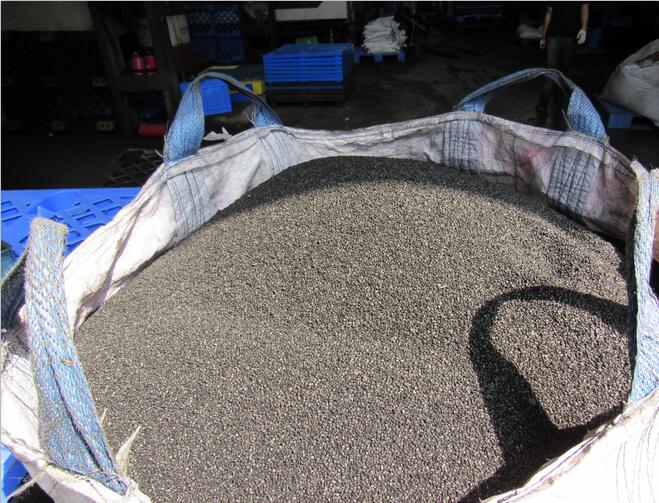
Plastic pallet material
In this plastic pallet manufacturing technique, the plastic pallet material and colorant are heated together to a desired temperature (about 250 °C). Normally, the heating takes place in a barrel with a rotating screw.
With the plastic material heated to a desired temperature, inject in a mold where it is clamped under pressure. It is then allowed to cool and ejected.
This is a process you can count when in need of plastic pallet with intricate details. However, you should be ready to pay for the high cost of energy.
In short, high pressure injection molding and structural foam molding play an integral role in plastic pallet manufacturing. However, in each case, evaluate your specific requirement before settling on a plastic pallet molding process.
Now, let’s consider yet another critical plastic pallet manufacturing process that has been adopted by most manufacturers.
2. Thermoforming Plastic Pallets
In this process, you need to heat the plastic to a pliable temperature (a point you can easily manipulate it), then form it over a mold and allow it to cool. Thermoformed plastic pallets are popular in many supply chain applications.
Of course, the process of making plastic pallets is not different from the normal thermoforming.
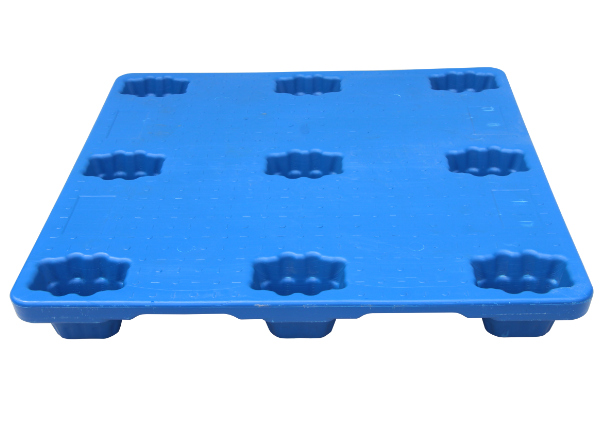
This is an example of thermoformed plastic pallets
Generally, thermoforming plastic pallet is a three-step process that involves:
- Heating the plastic pallet material; this results in an extruded plastic sheet with a desired thickness.
- Forming either one or two sheets against the mold, while evacuating air between the sheet and the mold. Alternatively, a vacuum suction draws and pushes the heated plastic onto the mold.
- Allow the formed plastic pallet to cool
Broadly, there are two types of thermoforming techniques and they include vacuum forming and pressure forming.
Vacuum Thermoforming
In vacuum forming, a plastic pallet is made into a three dimensional shape using heat and pressure. That is, you’ll heat the plastic material to a pliable temperature, put it over a mold and then it is drawn into the mold by a vacuum
Through this, it will take the desired shape of the mold. A good example is drape thermoforming.
Pressure Thermoforming
Pressure thermoforming is similar to the vacuum thermoforming. However, in addition to the force/pressure generated by the vacuum, you’ll need an extra pressure that will force the plastic into the mold.
The good thing about pressure thermoforming is that, you can produce plastic pallets with good aesthetic qualities. That is, it can create greater detail such as textured surface, undercuts, sharp corners, etc.
It is virtually impossible to create such details using vacuum thermoforming.
Again, apart from these, you’ll also come across twin sheet thermoforming of plastic pallets. It is one of the most popular plastic pallet manufacturing processes.
Ideally, this is either pressure or vacuum thermoforming of plastic pallets, however here you’ll form two sheets of plastic simultaneously.
Twin-sheet plastic pallets are uniquely distinguished with a hollow structure. They are lightweight and cheaper than solid plastic pallets.
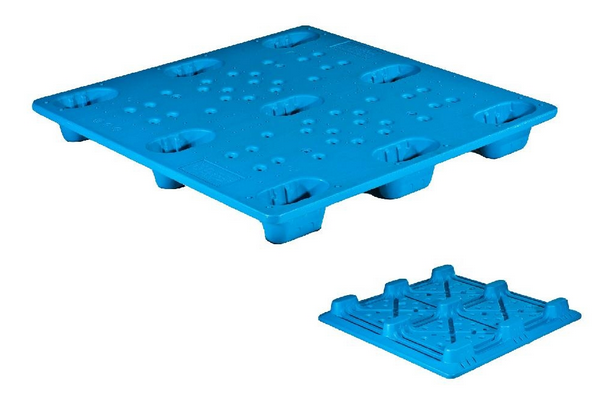
Twin wall thermoformed plastic pallet
The space between the pallets makes them susceptible to water retention. It is for this reason that you have to keep the pallets under cover.
Even though thermoforming plastic pallet has slow cycle time, it is a cheaper process compared to injection molding. However, this alone should not form the basis for making decisions.
This is why we need to compare the two processes.
Thermoforming vs. Injection Molding Plastic Pallets
To make a wise decision, you should be able to compare these two plastic pallet manufacturing processes. It is the only way to get value for your money.
Let’s review these critical aspects:
- Production of plastic pallets
In thermoforming plastic pallets, a plastic sheet is heated to a pliable temperature after which, it is molded to the tools shape. Here, you’ll use suction for vacuum forming or suction and pressure.
On the other hand, in injection molding, you’ll heat the plastic to a liquid state then inject it into a mold.
- Cost of producing plastic pallets
This is an integral part when choosing any of these plastic pallet manufacturing processes. Normally, the tooling cost of injection molding is higher compared to thermoforming.
It is actually for this reason that injection molding is only suitable for large scale plastic pallet production. However, with the mold already available, the cost of individual part is cheaper when you use injection molding than thermoforming.
In short, the production capacity will play an integral when it comes to choosing either thermoforming or injection molding. Normally, the break-even point in these two processes for any project can be between 2,000 to 5,000 parts.
- Lead time
Normally, the lead time will depend on the duration it takes to make the tooling. On average, it takes more time in injection molding than thermoforming.
However, the timeframe will vary from one company to another, depending on their production capacity and technology.
In short, to go about this process successfully, you need to discuss all your intentions with the manufacturer. Through this, you’ll adopt suitable and practical plastic pallet manufacturing processes.
Apart from these two processes, blow molding is also a common plastic pallet molding technique.
3. Blow Molding Plastic Pallets
Blow molding is the process of forming hollow parts. Generally, the process involves these key stages:
- Melt the plastic material
- Form it into a parison. A parison is tube-like piece of plastic that has a hole on one end where compressed air can pass.
- Clamp the parison into a mold
- Blow air in the parison to push or expand it to take the exact shape of the mold.
- Allow it to cool and harden
By doing these, you’ll have a blow molded component.
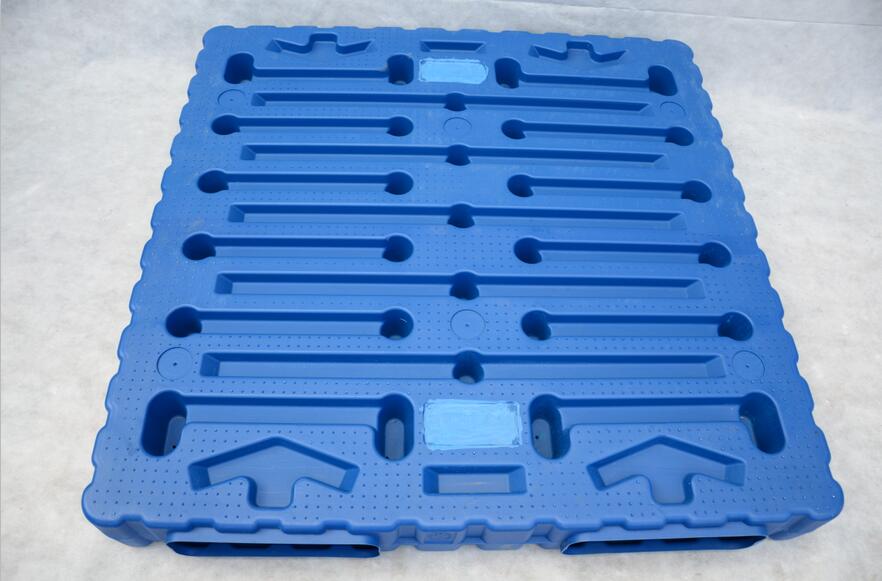
This is an example of blow molded plastic pallet
In most industrial setups, you can classify blow molding process as:
- Extrusion blow molding
- Injection blow molding
- Injection stretch blow molding
For the scope of this article, we may not discuss all these types of blow molding processes. However, you’ll find useful links at the end of this article to learn more about this subject.
Now, let’s focus on the practical aspect of manufacturing plastic pallets using this technique. It’s slightly different from the other plastic pallet manufacturing processes I had discussed earlier.
Normally, the blow molded plastic pallets tend to resemble a twin-wall thermoformed plastic pallet. In plastic pallet manufacturing industry, you should expect the following:
- Choose a suitable type of plastic material
- Extrude it into tubing; that is, cut a section of the molten plastic to a suitable length forming a parison.
- Introduce parison into a mold cavity
- Introduce air to inflate the parison to conform to the mold’s geometry (shape of the plastic pallet you need).
- Let it cool and remove it for any possible secondary operations.
Below is a section of blow molding machine:
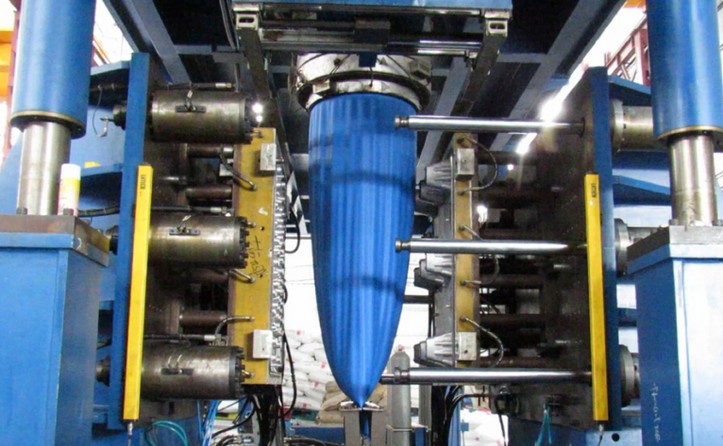
A section of blow molding machine
Blow molding is one of those plastic pallet manufacturing processes that produce pallets resistant to very low temperatures – as low as 40°C. Furthermore, they don’t get damaged easily and show very little or no damage when accidentally hit by a forklift.
They have excellent resistance to impact compared to injection molded plastic pallets, especially at this low temperature. Also, they are lightweight and strong, hence suitable for a number of cold chain supply procedures.
In most cases, quite a number of plastic pallet manufacturers opt for blow molding on special orders.
Other plastic pallet manufacturing processes that are not common include:
4. Profile Extrusion
These plastic pallets mainly resemble wood pallets. It is a unique pallet manufacturing process in that you will:
- Melt plastic parts and force them through an extruder
- Cut to size different parts/shapes
- Fasten them together using nails, heat or welds
At times, wood fiber may be added to make the pallet more rigid. However, you should realize that incorporating fasteners will make this plastic pallet unsafe unlike those made purely from molding the entire structure.
Again, including wood fiber may complicate the issue, especially for countries that follow the ISPM 15 regulations.
5. Compression Molding
When you compare compression molding and injection molding, this is a cost effective process of making plastic pallets. It requires low cost of tooling and labor besides, the process minimizes wastages.
In this process, you need to:
- Place material into a desired mold
- Heat the mold as you apply a predetermined amount of pressure
- Maintain the pressure until the pallet cures
This is a slow process compared to the injection molding technique. This is why it is not a popular among many plastic pallet manufacturers.
6. Rotational Molding
In rotational molding, plastic pallet materials are ground into small pieces such as powder or granules. They are loaded into the mold, which is sealed, heated and rotated in two perpendicular axes.
This action ensures every particle mixes and distributes within the mold. The mold then cools and you can eject the plastic pallet.
Up to this point, I have covered 6 different plastic pallet making processes. Now, which one should you go for?
Well, let’s face it:
In any plastic molding process, you need to focus on the following 6 aspects:
- Quality of the plastic pallet
- Cost of tooling, equipment and setting up the plant
- Cost of labor and energy
- Minimum or zero wastage
- Production capacity and capability
- Surface finish, design tolerance
With a critical analysis of every aspect, I am sure you can adopt a suitable and cost effective plastic pallet manufacturing process.
Conclusion
Depending on the production capacity, application and design of a plastic pallet, you need to consider the first three plastic pallet manufacturing processes – thermoforming, injection molding and blow molding techniques. This will only be a sure way to get high quality, durable and cost effective plastic pallets.
For more information on the plastic pallet manufacturing process or where to get the best pallets, you can contact us today.

 86-137-1715-1153
86-137-1715-1153